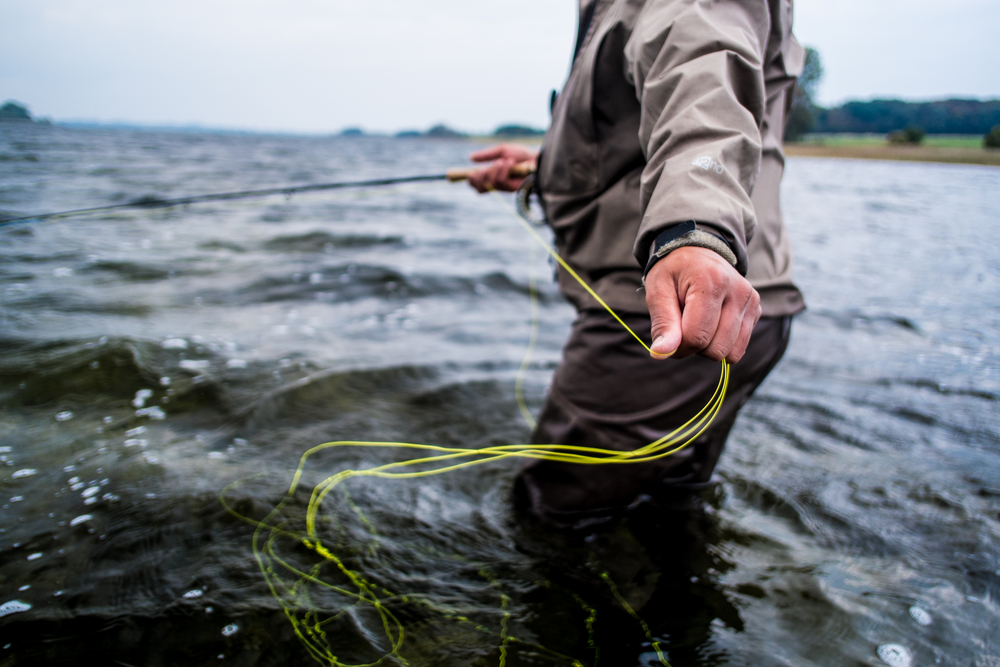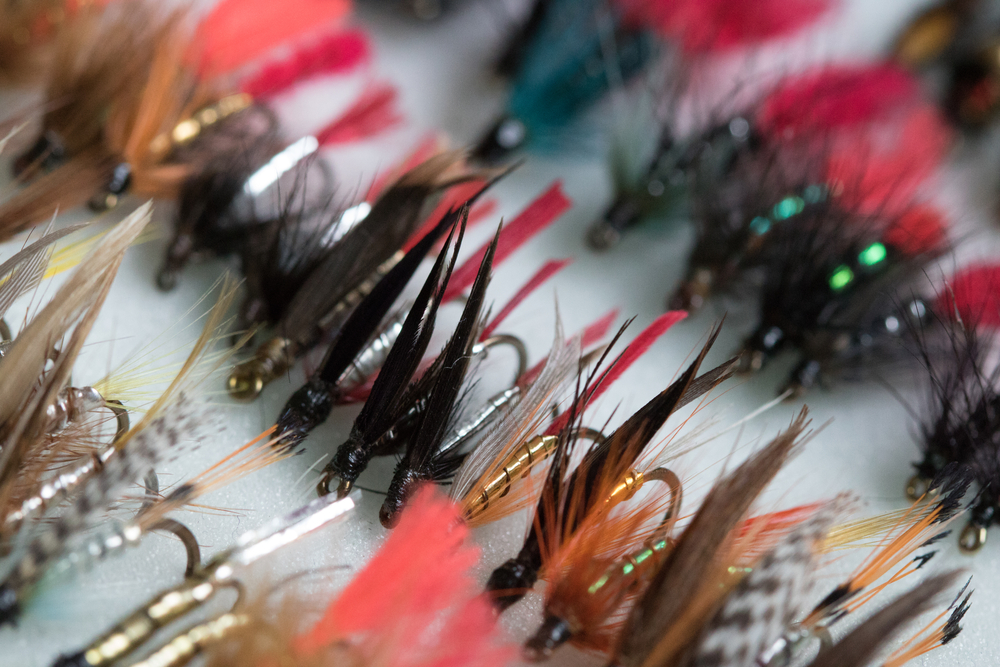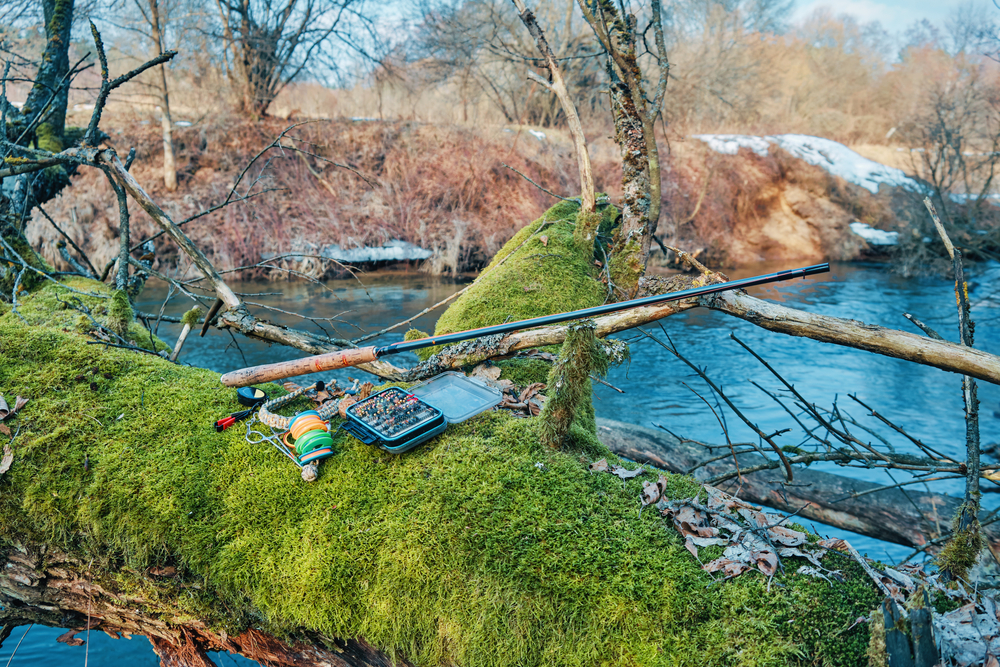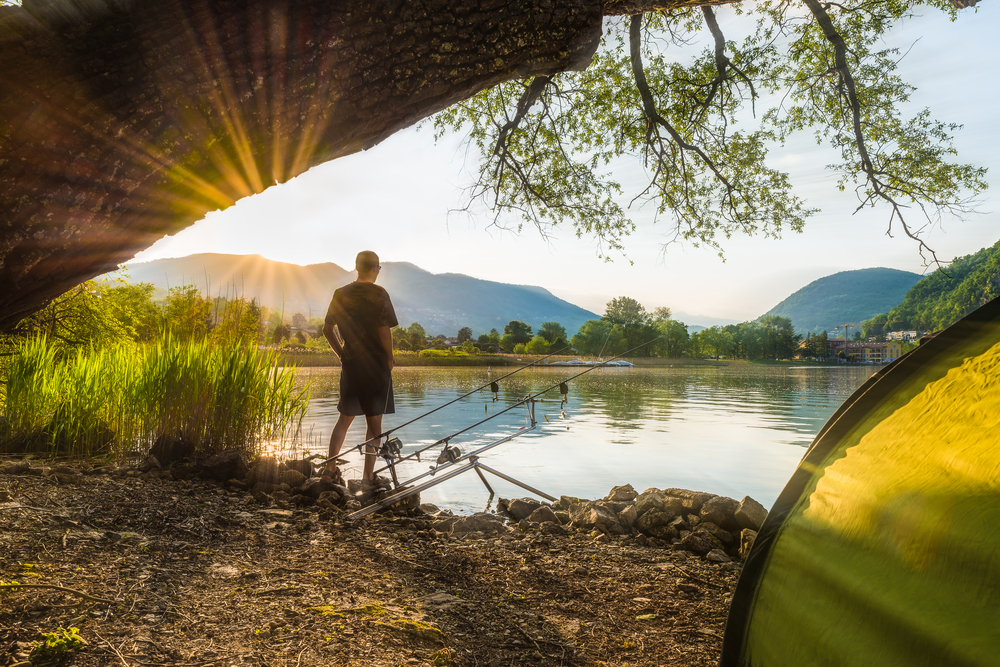So you want to get started fly fishing? Congratulations you have come to the right place to join in on one of the coolest outdoor pastimes out there. Fly fishing is a great way to connect with the outdoors and recharge no matter your experience level. Now we know fly fishing can seem like quite the challenge to learn, but hopefully, after a read through this guide you’ll be well on your way to hooking into fish on the fly!
This guide is a “swipe file” of high-level info about fly fishing, and if you want to know more about any of the subjects mentioned, you can find out all about them in our Fly Fishing Category which you can access by clicking here.
What is Fly Fishing
The most basic form of fishing is called “angling.” It’s when you use the weight of the line (not the strength of the angler) to cast your baited hook or lure out into the water. Most often people target trout with this method, but it can be just as successful (and sometimes more so) to target bass, salmon, pike, catfish, or any number of other species.

Basic Guide to Fly Fishing Equipment
Rod & Reel
The most important part of any fly fishing set up is the rod and reel. With any style of fishing, there are multitudes of different rod styles, reels, and lines but for the purposes of this post, we will speak in more general terms. When you are matching a reel to your new fly rod, you want to make sure it is designed to fit the weight of the line you are using. If you are a beginning fly fisherman, I suggest using a 7 or 8 weight line, it’s easy to find, and it will give you a good starting point before you start experimenting with heavier or lighter lines.
Fly Line & Backing
Fly lines are all designated by weight, either on a scale of 1-12 (1 being the lightest) or one a scale based on grain-weight, utilizing the same scale as gunpowder. Most lines are typically 90 feet in length and are made up of 3 main sections: the head, the taper, and the running line. The head is the heaviest and thickest part of the line and helps to turn over your leader and flies.
The taper is the in-between section that tapers from the head to the running line. The running line is the thinnest and typically, the longest part of the line, during normal casting you will typically not interact with the running line except as it shoots out of the end of your rod. The fly line is the workhorse of any fly fishing setup as it is the main reason your rod is able to propel your flies forward in the air.
When fighting big fish, it’s important to have enough backing to allow you to pull your catch into close range where you have the advantage over the fish. Try to use as much backing as your reel will hold.
Leaders & Tippet

The leader is the “connector” that attaches your fly to your line. It varies in length depending on what kind of fish you’re trying to catch, but is normally between 7.5 feet and 12 feet long. Most leaders are “pre-tied” with the tippet material attached to the butt end and then a “leader-end” attached to the fly. This leader-end is a very thin piece of tippet material that is threaded through the eye of the hook and held on by a tiny split ring. Many fly fishers tie their own leaders. This gives them the ability to personalize them. Typically, a shorter strong leader will turn over flies easily but you sacrifice stealthiness. When targeting spookier fish, you will want to use a longer, lighter leader to make it the most difficult for a wary trout to see!
Tippet is the name given to lengths of either mono-filament or fluorocarbon that you attach to the end of your leader to lengthen it or mend sections that were cut off while rigging. Tippet is sold on spools that are based on break-strength and on the same 0-8x scale as leaders. To keep yourself as prepared as possible to mend any leader that starts wearing down, you should always carry a decent supply of tippet in your fishing gear.
Wading Gear
If you are going to be fly fishing year round, you need some durable wading gear. This includes a set of breathable chest waders and wading boots. Typically, waders consist of a pair of chest waders and a set of wading boots. For the best all-around performance, you should wear breathable chest waders and wading boots. Most modern waders are stocking-footed; this means your feet go into neoprene booties that are attached to the wader material. This requires you to buy a separate wading boot. Wading boots are constructed with thick, stiff soles to aid while walking in the woods or on longer hikes.
Accessories
When it comes to hobbies, of course, there are countless accessories available to help you improve your skill level. The most basic accessory you’re going to need is a good quality fly box to haul all your flies out to the water. There are dozens of different styles and designs to choose from so we really recommend trying out a few at your local fly shop and finding which one fits your style and matches your fitness level best. Once you do find the right style for you, just remember a simple rule: A snug fit is best!
Styles of Fly Fishing
There are many ways to cast a fly rod, but the most basic is 2-Handed Casting. It was developed by Scottish Highlanders, who used it to catch Sea Trout in the famous River Spey. Nymphing was developed by African Americans, who use it today on the Ohio and Mississippi Rivers. Dry Fly Fishing was developed by English Anglers, who use it today in England, Wales and Ireland. Saltwater Fly Fishing was developed by Aussies, who use it on the great Saltwater Angling Rivers of Australia. And Tenkara was developed by Japanese Anglers on the famous Rivers of Japan.

Casting with two hands is a great way to cast big rivers. Use longer, heavier rods and lines and cast far enough to cover a lot of water. This will allow you to cast for salmon and steelhead, but also, it’ll let you cast for trout from smaller waters.
Nymphing for trout is one of the most efficient ways to catch fish in streamer-fishing situations. The secret is in the precise delivery of the nymph, which is usually done with a long, lightweight rod and a long leader. Learning how to nymphing for trout can turn you into a more successful angler in both stillwater and flowing water environments. Check out our in-depth article on Nymphing for more!
Dry fly fishing is probably the most common type of fly fishing. It’s very effective any time of year. However, during the winter, trout sometimes feed on insects that are on the surface of the water. This causes them to be spooked by the presence of a moving insect and they will rise to strike at what they think is a small prey animal. These “attacks” are often very successful and result in a nice, fat fish for you to enjoy.
Fly fishing for saltwater (saltwater) is a very recent development in fly fishing history. It’s almost 100% based in “streamer” fishing, where flies are designed to look like “food” to hungry fish. If you don’t have good access to trout streams, or bass ponds (saltwater), there are plenty of saltwater adventures!
Wading Vs. Floating
Fly fishing out of a boat has its pluses and minuses. You can move quietly and easily over long distances, however, you are limited by how deep you can or are willing to wade. If you get the chance, try fly fishing from a boat, and if you don’t have access to one, consider hiring a guide for a float to expand your fly fishing horizons!
Some final thoughts

Fly fishing is more than just a fishing technique. The relaxation, thrill, and excitement of this form of fishing is just the beginning. Fly fishing teaches you about the environment, ecology, biology, and physics of the area you fish in.
When you find this information you can understand the environment and use it to your advantage. Fly fishing is an art. It is an art that needs patience and practice to perfect. Fly fishing fascinates and challenges those who are interested. Fly fishing is an ideal sport for a beginner angler and a fantastic sport for a veteran fisherman.






